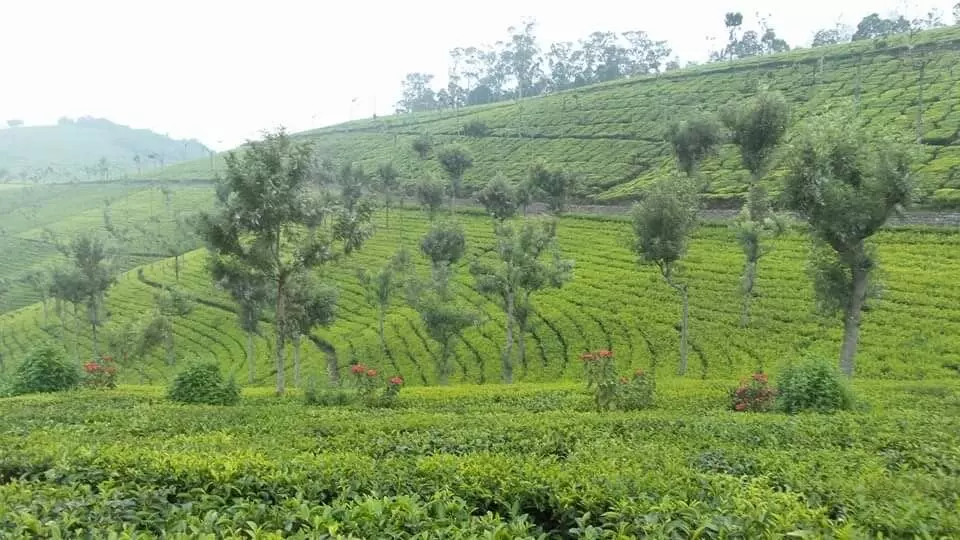The Nilgiris: Perfect summer getaway in the Blue Mountains
Nilgiris also called the 'Blue Mountains’, a part of the Western Ghats appears blue from afar is a perfect summer getaway
By Beyniaz Edulji
Hyderabad: The Nilgiris in South India are a treat any time of the year but visiting the Blue Mountains in summer is a real delight. The name ‘Blue Mountains’ – a part of the Western Ghats – comes from how they appear blue from afar.
The blue colour is attributed by some to the Eucalyptus trees that grow on the hillsides, and by others to the rare Kurunji flower which blooms only once every 12 years.
The Nilgiris cover an area of almost 2,500 square kilometres. The cooler climate in these hills makes it a much sought-after destination by tourists. The nearest airport is the Coimbatore International Airport and it is well connected to Mumbai and other cities.
Several hill stations
The Nilgiri district is home to many beautiful hill stations, the most popular ones are Udhagamandalam (Ooty), Coonoor, Kothagiri and Gudalur.
Wellington
Wellington is the home of The Defence Services Staff College, which gives training to officers of the Indian Armed Forces, foreign countries and various Indian Civil Service departments. Tourists should visit the Manekshaw Bridge named after Field Marshal Manekshaw, Wellington’s most famous resident.
It was called the Black Bridge earlier as the bridge was built of Burmese teak and was painted black. It was constructed in 1858.
Ooty
Most tourists to Ooty head straight for one of the main attractions; a peaceful, artificial lake made in 1824 and used for boating.
The beautiful flowering plants of the Botanical Garden are also worth a visit. Laid in 1847, it covers an area of over 22 acres and has a fossilised tree which is over 20 million years old.
Coonoor
Coonoor, at 1,839 metres above sea level, is the second most popular hill station in the Nilgiris, renowned for its tea gardens and beautiful picnic spots.
Visitors to the Nilgiris always head for the scenic spice and tea plantations. No trip to Coonoor is complete without picking up cheese, relishes and jams. Nilgiris is also famous for spices, eucalyptus oil, Nilgiri tea and handmade chocolates.
Doddabetta
Doddabetta, between the Eastern and Western Ghats, is about 10 km from Ooty and is the highest peak at 2,623 meters in the Nilgiris.
On a clear day, one can view the Mysore plateau from here. Other places worth visiting are The Stone House, a bungalow built in 1822, and St. Stephen’s Church.
Reserve Forests
The Reserve Forests of Bandipur, Masinagudi and Madhumalai, are especially worth a visit.
It is home to tigers, panthers, deer, wild boar, mongoose, wild fowl, peacocks, monkeys and elephants. By road, Madhumalai is only 36 km from Ooty. Many tourists stay in the jungle cottages built on stilts just to have a glimpse of wild animals and birds. There are many safaris one can go on from here.
Scenic Train Ride
Highly recommended is the train ride on the Nilgiri Mountain Railway. It runs from Mettupalayam to Udagamandalam (Ooty), via Coonoor in the Nilgiri Hills. At 2,600 m above sea level, Ooty stands as the ‘Queen of Hill Stations’.
Mettupalayam stands at the foothills. This 46-km ride on the train is extremely scenic because of the surrounding rocky terrain, tea plantations, and forested hills.
The Nilgiri rail system which is over a century old is unique as it is the steepest in Asia. It has been declared a World Heritage Site by UNESCO. The train stops briefly at little stations with charming names: Wellington, Coonoor, Aruvankadul, Ketti and Lovedale.
Tribal huts and museum
The Nilgiri region was originally occupied by the Todas along with other tribes. Tourists also like to visit Toda huts and the Tribal Museum.
Ban on plastic enforced strictly
Plastic is banned in the Nilgiris as the Nilgiri Biosphere Reserve is part of the UNESCO World Network of Biosphere Reserves.
The landscape in the Nilgiris is a part of the Western Ghats ecosystem and has an abundance of perennial streams and small reservoirs.
It is perfect for hiking, trekking, walking holidays or just unwinding in the lap of nature. The Nilgiris is a food lover’s paradise with the freshest vegetables, fruit and trout available here.
E-passes for Vehicles
Because of the cool climate, Ooty flowers show and other summer activities, there is a large influx of tourists to the Nilgiris every summer. E-passes for vehicles entering are now mandatory.